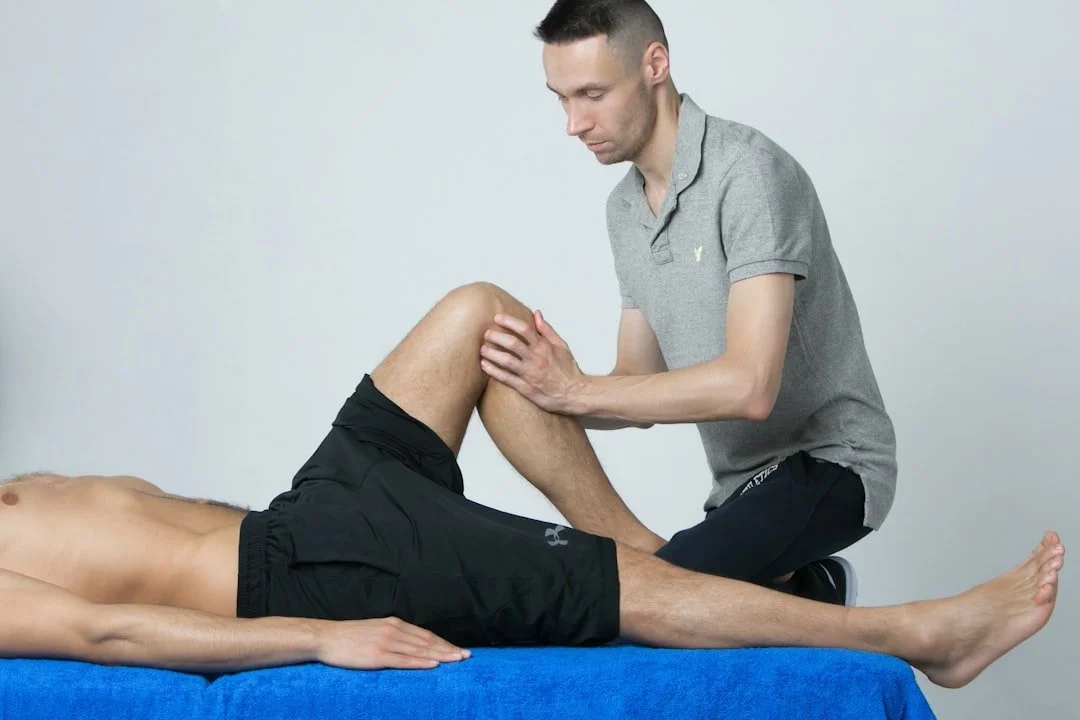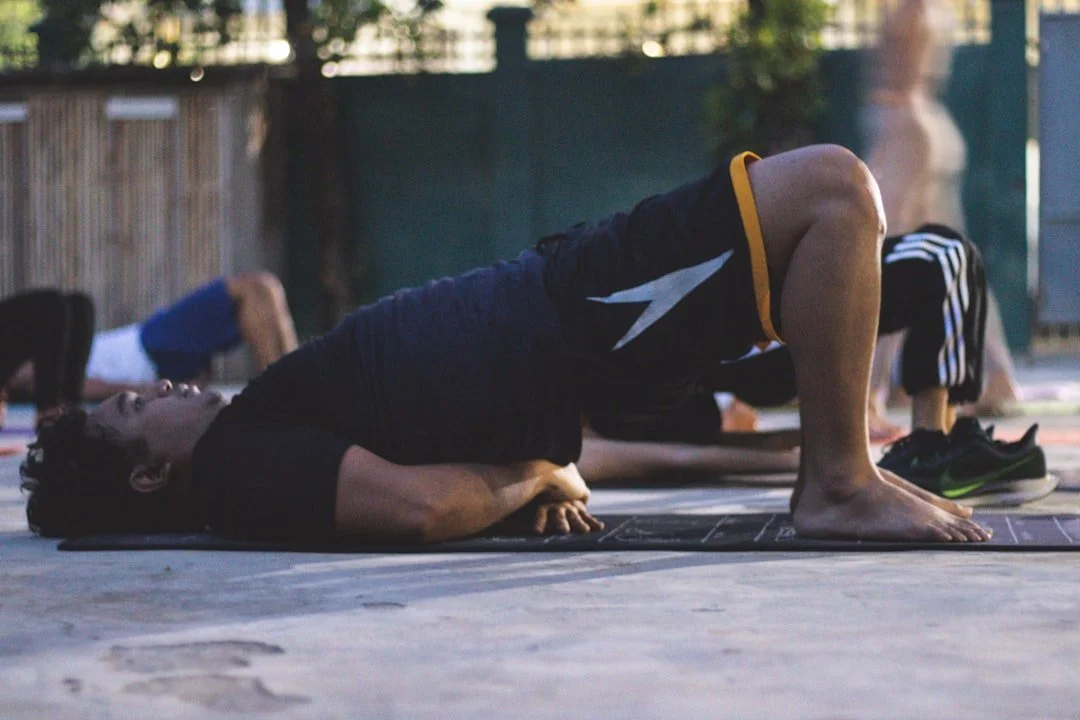5 Essential Exercises for Lower Back Pain Relief
By Brett Green, PT, DPT • 2025-09-09
Lower back pain affects millions of people worldwide and is one of the most common reasons patients seek physical therapy treatment. As a Doctor of Physical Therapy, I've seen firsthand how the right exercises can transform someone's quality of life.
Understanding Lower Back Pain
Before diving into the exercises, it's important to understand that lower back pain often stems from:
Muscle weakness in the core and glutes
Poor movement patterns in daily activities
Lack of mobility in the hips and thoracic spine
Prolonged sitting and sedentary lifestyles
The exercises I'm sharing today address these root causes rather than just masking symptoms.
The 5 Essential Exercises
Quick Reference: Complete this routine 2-3 times daily. Each exercise takes 2-3 minutes. Total time: 10-15 minutes.
Exercise Checklist
☐ Dead Bug (10 reps each side)
☐ Bird Dog (8-10 reps each side)
☐ Modified Plank (20-45 seconds)
☐ Glute Bridge (15-20 reps)
☐ Cat-Cow Stretch (10-15 reps)
1. Dead Bug
The dead bug is an excellent exercise for building core stability while maintaining a neutral spine position.
How to perform:
Lie on your back with knees bent at 90 degrees
Slowly extend opposite arm and leg
Hold for 3-5 seconds, then return to start
Perform 10 reps each side
Key points: Keep your lower back pressed against the floor throughout the movement.
This exercise is part of establishing proper movement patterns for core stability.
💡 Pro Tip: If this feels too difficult, start by just moving the arm or leg separately before combining both movements.
2. Bird Dog
This exercise improves coordination between your core and back muscles while challenging your balance.
How to perform:
Start on hands and knees (tabletop position)
Engage your core to prevent back arching
Extend opposite arm and leg simultaneously
Hold for 5-10 seconds while breathing normally
Return to start position with control
Perform 8-10 reps each side
⚠️ Common Mistakes: Avoid hiking the hip up or rotating the torso. Keep hips level throughout the movement.
3. Modified Plank
Building core endurance is crucial for long-term back health.
How to perform:
Start on forearms and knees (not toes)
Maintain straight line from head to knees
Engage core by pulling belly button toward spine
Hold for 20-45 seconds while breathing normally
Progress to full plank as strength improves
Progression Timeline:
Week 1-2: Modified plank (knees down) 20-30 seconds
Week 3-4: Modified plank 30-45 seconds
Week 5+: Progress to full plank on toes
4. Glute Bridge
Strong glutes are essential for proper hip function and reducing lower back stress.
How to perform:
Lie on back with knees bent, feet flat on floor
Arms at sides for stability
Squeeze glutes and lift hips up
Create straight line from knees to shoulders
Hold for 2-3 seconds at top
Lower with control
Perform 15-20 repetitions
Activation Cue: Think "squeeze a coin between your glutes" at the top of the movement.
5. Cat-Cow Stretch
This mobility exercise helps improve spinal flexibility and reduce stiffness.
How to perform:
Start on hands and knees in tabletop position
Cow pose: Drop belly down, lift chest and tailbone up
Cat pose: Round spine up, tuck chin to chest
Move slowly between positions (3-4 seconds each)
Focus on breathing: inhale during cow, exhale during cat
Perform 10-15 repetitions
Breathing Pattern: This exercise is as much about breathing and relaxation as it is about movement.
Implementation Guidelines
📅 Weekly Schedule
Week 1-2: Focus on form, shorter holds
Week 3-4: Increase hold times and repetitions
Week 5+: Maintain consistency, add variations
⏰ Timing
Frequency: Perform these exercises 2-3 times per day, especially during acute pain episodes.
Best Times:
Morning: Gentle mobility after waking
Midday: Combat sitting stiffness
Evening: Relaxation and pain relief
📈 Progression Guidelines
Progression: Start with shorter holds and fewer repetitions, gradually increasing as your strength improves.
Pain Response: These exercises should not increase your pain. If they do, stop and consult with a physical therapist.
⚠️ Red Flags: Stop immediately and seek medical attention if you experience shooting pain down your leg, numbness, or significant increase in pain.
Recovery: Proper recovery is essential for healing. Check out our guide on evidence-based recovery strategies to optimize your healing process.
Real Patient Success Stories
Sarah's Story: From Chronic Pain to Pain-Free Living
Sarah, a 45-year-old office manager, came to me after 6 months of persistent lower back pain. "I couldn't even pick up my kids without wincing," she told me during our first consultation. Her MRI showed no structural damage, but her movement patterns revealed significant core weakness and hip immobility.
Within 3 weeks of consistently performing these five exercises, Sarah reported a 70% reduction in her daily pain levels. "The dead bug exercise felt impossible at first, but now I can do 15 reps easily. More importantly, I can play with my kids again."
Mark's Journey: Returning to Golf After Lower Back Pain
Mark, a 58-year-old avid golfer, developed acute lower back pain that prevented him from playing his favorite sport. "Every time I tried to swing, I felt like someone was stabbing me in the back," he described.
By focusing on the glute bridge and cat-cow exercises specifically, Mark rebuilt the hip mobility and core stability needed for golf. After 8 weeks, he returned to the course pain-free and has remained symptom-free for over a year. "These exercises are now part of my daily routine, just like brushing my teeth."
The Science Behind These Exercises
Clinical Evidence Supporting Exercise-Based Treatment
Recent research strongly supports the effectiveness of these specific exercises:
Core Stabilization Exercises (Dead Bug, Modified Plank): A 2024 systematic review published in the Journal of Physical Therapy Science found that core stabilization exercises reduced pain by an average of 3.08 points on the visual analog scale compared to 1.71 points with routine physical therapy alone.
Motor Control Training (Bird Dog, Dead Bug): The 2023 Cochrane Database systematic review demonstrated that motor control exercises produce significant improvements in functional outcomes at 6- and 12-month follow-ups for chronic lower back pain patients.
Hip Strengthening (Glute Bridge): Research from the American Journal of Physical Medicine & Rehabilitation (2023) showed that hip strengthening exercises, particularly glute bridges, reduced lower back pain recurrence rates by 45% compared to back-focused exercises alone.
Spinal Mobility (Cat-Cow): A 2024 study in Manual Therapy found that regular spinal mobility exercises improved pain-free range of motion by an average of 25 degrees in chronic lower back pain patients.
WHO Guidelines Integration
These exercises align with the World Health Organization's 2023 guidelines for chronic lower back pain management, which emphasize:
Exercise training as a first-line, non-pharmacological intervention
Biopsychosocial approach addressing physical, psychological, and social factors
Person-centered care with active patient participation
When to Seek Professional Help
While these exercises are beneficial for most people with lower back pain, you should seek professional evaluation if you experience:
Pain radiating down your leg
Numbness or tingling
Progressive weakness
Pain that worsens despite conservative treatment
Frequently Asked Questions
Q: How long will it take to see results from these exercises?
A: Most patients begin noticing improvements within 2-3 weeks of consistent practice. However, significant functional improvements typically occur after 6-8 weeks. Remember, lower back pain that took months or years to develop won't disappear overnight. Consistency is more important than intensity.
Q: Can I do these exercises if I have a herniated disc?
A: These exercises are generally safe for most people with herniated discs, but I strongly recommend getting clearance from a healthcare provider first. Some modifications may be necessary. For example, you might need to reduce the range of motion in the cat-cow stretch or start with very short holds in the dead bug.
Q: Should I stop exercising if I feel sore the next day?
A: Mild muscle soreness is normal and expected, especially in the first week. This is different from pain. Soreness typically feels like a dull ache in the muscles and improves with gentle movement. Sharp, shooting, or worsening pain is not normal and should prompt you to stop and consult a professional.
Q: What if I can't perform all the exercises due to severe pain?
A: Start with what you can do, even if it's just one exercise or a modified version. For severe pain, begin with the cat-cow stretch and dead bug with smaller movements. As your pain decreases, gradually add the other exercises. Never force through significant pain.
Q: How do I know if I'm doing the exercises correctly?
A: Quality is more important than quantity. Key indicators you're doing them correctly:
You can breathe normally throughout the exercise
You feel the muscles working but not straining
You can maintain proper form for the entire set
You don't experience increased back pain during or after the exercise
Consider scheduling a session with a physical therapist for personalized instruction and form correction.
Q: Can these exercises prevent future back pain episodes?
A: Absolutely! Research shows that people who maintain a regular exercise routine focusing on core stability and hip mobility have significantly lower rates of recurrent lower back pain. Think of these exercises as "insurance" for your spine's long-term health.
Q: What should I do if the exercises become too easy?
A: Progression is a great sign! Here are ways to advance:
Dead Bug: Add resistance with a resistance band or light weights
Bird Dog: Increase hold time to 15-20 seconds
Modified Plank: Progress to full plank, then add leg lifts
Glute Bridge: Try single-leg bridges or add a resistance band
Cat-Cow: Add thoracic rotation or side bends
Q: Is it normal to have good days and bad days?
A: Yes, this is completely normal during the healing process. Factors like stress, sleep quality, weather changes, and activity levels can all influence your pain levels day to day. Focus on the overall trend over weeks, not daily fluctuations.
Conclusion
Consistent performance of these five exercises can significantly improve your lower back pain and help prevent future episodes. Remember, the key to success is consistency rather than intensity.
Recovery takes time, but with the right approach, you can get back to doing what you love pain-free.
Have questions about these exercises or dealing with persistent back pain? Schedule a consultation with our team at Get Back PT and Performance.




